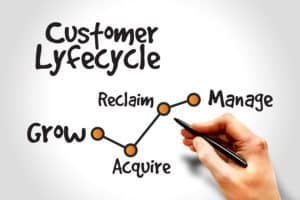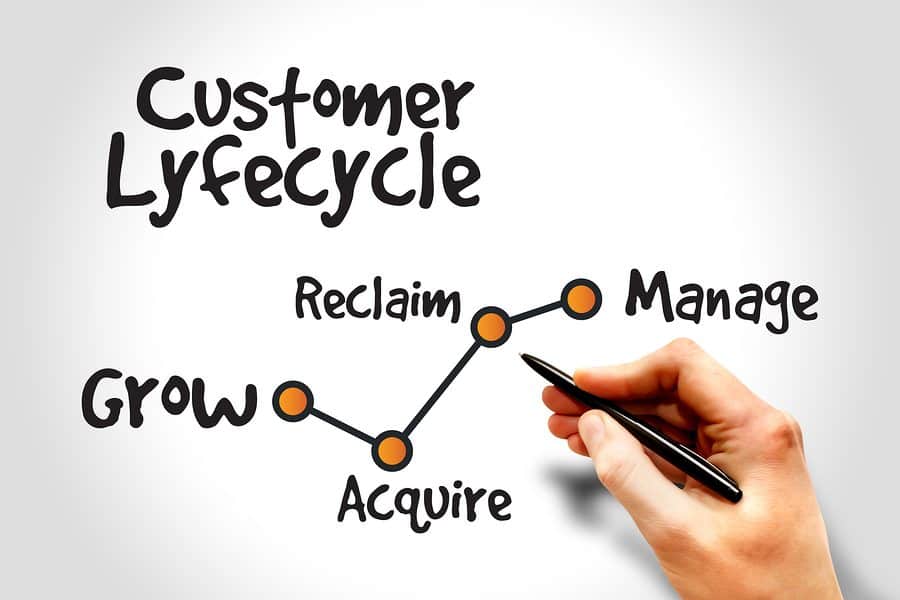 Do you define specific prospect goals for each stage of your sales cycle? A great sales process should include sales pipeline management tactics that will help you understand the mental state of leads as they move through your funnel.
Do you define specific prospect goals for each stage of your sales cycle? A great sales process should include sales pipeline management tactics that will help you understand the mental state of leads as they move through your funnel.
In the past, we’ve covered the stages of the sales process mostly from a salesperson’s perspective:
- Generating Leads
- Qualifying Prospects
- Proposing a Solution
- Aiding Decision-making
- Closing the Sale
But there are other ways to look at the same five-stage sales cycle. Consider this: If the best way to persuade a customer is to understand them, then knowing a prospect’s mental process at each stage could be invaluable. And it’s not as varied as you may think. Most customers, whether you’re selling lattes or lakefront cottages, share a similar trajectory through the sales process. The key is to stick with your process and know your goal. Here’s how to do it.
Stage One: Attention
You have two goals. Get the prospect’s attention and, once you’ve captured it, get them to like you. For the prospect, this is about piquing their curiosity. And they don’t need to love you — yet. Your brand just needs to be likable enough for them to let down their guard. The leads that pass this test move on to stage two, where you will qualify them by gauging interest.
Stage Two: Interest
For both the sales professional and the prospect, the second stage of this process is interest. This is not altogether different than a first date. Is there a “match”? That is, do you have the products or services a prospect needs and wants? Your goal here is to learn more — through questioning and active listening — about the prospect’s needs and to determine how you could meet those needs.
Stage Three: Conviction
Before a prospect is ready to make a decision to buy, they will test out their feelings on the matter. In the conviction stage, prospects offer up their beliefs and opinions about whether they need the product at all, what they need the product to do, their fears and objections about making the purchase, etc. They may weigh whether their need is urgent enough to warrant a purchase now, wonder if they need to make a purchase at all, or even think about the social perception from peers of them purchasing a particular product.
This is a complex stage for the sales professional, to say the least. Your process should focus on getting the prospect to understand first, that they do in fact have a problem in need of a solution, and second, that your product will solve that problem.
Stage Four: Desire
At the fourth stage, a buyer is past conviction. Not only do they believe their problem exists, they believe your product offers the best solution. They are ready to buy. Your primary job at this stage is to realize that your prospect has arrived at a buying decision and stop trying to sell. Failing to realize this can sometimes cost you the sale!
Instead, turn your attention to facilitating the sale. For some products, this is as simple as taking payment information and handing over a product. But for many products, a mortgage refinance, for instance, this process will be more involved.
Stage Five: Close
The close of the sale is when the buyer finally takes action, and your sale is complete. You shouldn’t count a Stage Four sale closed until that action takes place. Until they sign on the dotted line, respect the fact that they are still a prospect who could walk, not a loyal customer.
Finally, after the close, remember to thank your customer for their business, make them feel confident about their choice, and ask for testimonials and referrals. This period, immediately after the closing to about two weeks later, depending on your business, is the best time to solicit referrals.
Closing Thoughts
Understand your prospect’s mindset at each stage of the sales process. It often follows a familiar pattern. Know what goal you need to accomplish at each stage of your pipeline management to move a prospect through your pipeline. And stick with the process all the way through your pipeline.
Manage your pipeline and track your goals with a new supply of high-quality aged leads from The Aged Lead Store. You’ll find thousands of sortable aged leads, ready to boost your sales, whether your business is auto, life, health, or home insurance, mortgage refinance, or solar installation.















